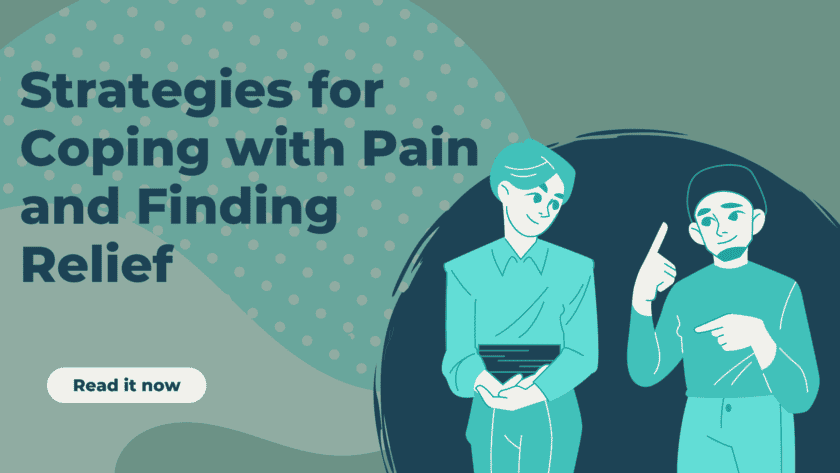Share this
Chronic pain is a debilitating condition that affects millions of people in the world. Whether it’s due to an injury, illness, or an underlying medical condition, persistent pain can significantly impact one’s quality of life. However, there are various strategies and approaches that can help individuals cope with pain and find relief. In this article, we’ll explore several effective methods, including acupuncture, to manage chronic pain and improve overall well-being.
1.Mindfulness and Relaxation Techniques
One of the most effective ways to cope with pain is through mindfulness and relaxation techniques. These practices can help individuals become more aware of their thoughts, emotions, and physical sensations, enabling them to respond to pain more effectively. Techniques such as deep breathing exercises, progressive muscle relaxation, and meditation can reduce stress and anxiety, which often exacerbate pain symptoms.
2.Exercise and Physical Activity
While it may seem counterintuitive, regular exercise and physical activity can play a crucial role in managing chronic pain. Low-impact activities such as swimming, walking, or gentle yoga can improve flexibility, strengthen muscles, and increase endorphin production, which can help alleviate pain. It’s essential to consult with a healthcare professional to develop a safe and appropriate exercise routine.
3.Acupuncture
Acupuncture is a Chinese medicine practice that has gained widespread recognition as an effective complementary therapy for pain management. This procedure involves inserting tiny needles into particular points on the body to stimulate the body’s natural healing processes.
Acupuncture in Bristol and other parts of the UK has become increasingly popular as more individuals seek alternative and holistic approaches to managing chronic pain. Bristol acupuncture practitioners offer a range of services tailored to different pain conditions, including back pain, headaches, and arthritis.
4.Cognitive Behavioural Therapy (CBT)
CBT is a form of psychotherapy that can help individuals develop coping strategies and change negative thought patterns that may contribute to their experience of pain. By addressing the psychological and emotional aspects of chronic pain, CBT can reduce stress, improve mood, and enhance overall quality of life.
CBT for pain management typically involves identifying and challenging unhelpful thoughts and beliefs about pain, developing problem-solving skills, and practising relaxation techniques. Therapists may also help patients set achievable goals and gradually increase their activity levels, promoting a sense of control and self-efficacy in managing their condition.
5.Medication Management
While not a long-term solution, prescription medications can provide temporary relief from pain. Commonly prescribed medications for chronic pain include:
- Opioid analgesics (e.g., codeine, morphine) for severe pain
- Non-steroidal anti-inflammatory drugs (NSAIDs) (e.g., ibuprofen, naproxen) for inflammatory pain
- Anticonvulsants (e.g., gabapentin, pregabalin) for neuropathic pain
- Antidepressants (e.g., duloxetine, amitriptyline) for certain types of neuropathic pain
It’s crucial to work closely with a healthcare professional to ensure proper dosage, monitor for potential side effects, and explore alternative or complementary treatments. Over-the-counter pain relievers, such as paracetamol or ibuprofen, can also be effective for managing mild to moderate pain.
6.Heat and Cold Therapy
Applying cold or heat to the painful part of the body can provide relief from various types of pain. Heat therapy, such as warm baths, heating pads, or heated gel packs, can increase blood flow and relax tense muscles. Cold therapy, on the other hand, can reduce inflammation and numb pain through the use of ice packs or cold compresses.
It’s important to follow safety guidelines and not apply extreme temperatures directly to the skin. Alternating between heat and cold therapy can also be an effective approach for some individuals.
7. Support Groups and Counselling
Dealing with chronic pain can be an isolating and emotionally draining experience. Joining a support group can provide a sense of community, validation, and shared understanding with others who are facing similar challenges. Support groups offer a safe space to discuss coping strategies, share experiences, and provide encouragement.
Additionally, seeking counselling or therapy can help individuals address the emotional and psychological impact of living with chronic pain. A mental health professional can provide guidance on managing stress, anxiety, and depression, which often accompany chronic pain conditions.
8.Complementary and Alternative Therapies
In addition to acupuncture, there are various complementary and alternative therapies that may be beneficial for pain management. These include massage therapy, chiropractic care, herbal remedies, and aromatherapy. It’s necessary to consult with a qualified practitioner and inform your primary healthcare provider about any complementary therapies you’re considering.
Coping with chronic pain requires a multifaceted approach that addresses both the physical and psychological aspects of the condition. By incorporating the techniques listed above, you can find relief and improve your overall quality of life.



